Vijaysar (Pterocarpus marsupium): Vijaysar Wood Glass Benefits
Introduction to Vijaysar (Pterocarpus marsupium)
Vijaysar, scientifically known as Pterocarpus marsupium, holds a distinguished place in Ayurveda, the ancient Indian system of medicine. This medicinal tree, commonly referred to as the Indian Kino Tree, has been revered for its therapeutic benefits for centuries. Found predominantly in the tropical regions of India, Nepal, and Sri Lanka, Vijaysar is renowned for its ability to manage diabetes, enhance digestion, and promote overall well-being.
The heartwood, leaves, and bark of the Vijaysar tree are widely used in various Ayurvedic formulations. Modern scientific research increasingly supports these traditional claims, reinforcing the significance of Vijaysar in contemporary health practices.

Botanical Profile of Vijaysar
- Scientific Name: Pterocarpus marsupium
- Family: Fabaceae
- Common Names: Indian Kino Tree, Malabar Kino, Bijaka
- Habitat: Deciduous forests in India, particularly in the Western Ghats, Bihar, and Madhya Pradesh
Botanical Description and Morphology
Vijaysar (Pterocarpus marsupium) is a large deciduous tree that can reach heights of 30 meters. It is characterized by its distinctive bark, leaves, flowers, and wood. Each part of the tree holds medicinal value and can be used in Ayurvedic treatments.
1. Bark
- Color and Texture: The bark is dark brown or greyish-brown with a rough texture. It peels off in irregular flakes.
- Medicinal Use: The bark is rich in tannins and flavonoids, making it effective for diabetes management and digestive health.
2. Leaves
- Shape and Size: The leaves are compound, pinnate, and alternate, typically 10-15 cm long.
- Color: Bright green on the upper side and paler underneath.
- Medicinal Use: The leaves possess antioxidant and anti-inflammatory properties and are used to treat skin diseases and digestive issues.
3. Flowers
- Appearance: The flowers are yellow and bloom in dense panicles.
- Flowering Season: Typically blooms during spring (March-May).
- Medicinal Use: The flowers have mild astringent properties and are traditionally used for blood purification.
4. Fruits
- Type: The fruit is a flat, disc-shaped pod with a hard outer covering.
- Seed: Each pod contains a single seed that is brown and woody.
- Medicinal Use: The seeds are used in managing blood sugar levels and treating skin conditions.
5. Heartwood
- Color: The heartwood is reddish-brown and dense.
- Properties: Known for its ability to impart a brownish color when soaked in water.
- Medicinal Use: The heartwood is widely used for diabetes control, particularly in the form of Vijaysar tumblers.
Vernacular Names of Vijaysar (Pterocarpus marsupium)
Pterocarpus marsupium, commonly known as the Indian Kino tree, is referred to by different names across various regions and languages. These vernacular names highlight the widespread recognition and use of this medicinal tree in traditional medicine systems like Ayurveda, Unani, and folk medicine.
Names of Vijaysar in Different Languages
-
Hindi: Vijayasara, Vijaysar, Beejasaar, Beejsar, Bij Sar
-
English: Indian Kino tree, Malabar Kino tree
-
Tamil: Vegai, Venga katal
-
Telugu: Vegisa, Peddagi
-
Malayalam: Venga
-
Kannada: Banga, Bange mara
-
Bengali: Peetashal, Piyasal
-
Marathi: Vivala, Bibala
-
Gujarati: Biyo
-
Oriya: Piashala
-
Urdu: Bijasar
Sanskrit Synonyms of Vijaysar
In Ayurveda, Vijaysar is known by various Sanskrit synonyms, each reflecting a unique characteristic or property of the tree:
-
Asana – The primary name in ancient texts
-
Beejaka – Referring to the seed-bearing nature of the tree
-
Pitasara – “Pita” means yellow; the heartwood is yellow in color
-
Pitasalaka – The heartwood resembles that of Shorea robusta (Sal tree)
-
Sugandi – The flowers are aromatic
-
Karsya – Known to cause emaciation or weight reduction
-
Kavya – A poetic reference to its revered status
-
Priya – Beloved or dear
-
Bandhukapushpaka – Referring to the beautiful flowers resembling the Bandhuka tree
-
Shouri – Brave or strong, symbolizing its therapeutic potency
-
Karshya – Slimming or reducing body mass
-
Sarjaka – Resin-yielding tree
-
Mahasarja – A great or large resin-producing tree
-
Tishya – Auspicious or beneficial
-
Krushnasarjaka – A dark-hued resin-producing tree
-
Pushpavruksha – Flower-bearing tree
-
Alakapriya – Loved by bees for its fragrant flowers
-
Sugandha Neela Niryasa – The tree’s exudate (resin) or heartwood has a pleasant fragrance
These names across languages and Sanskrit synonyms reflect the cultural significance, medicinal properties, and botanical characteristics of Pterocarpus marsupium across India and neighboring regions.
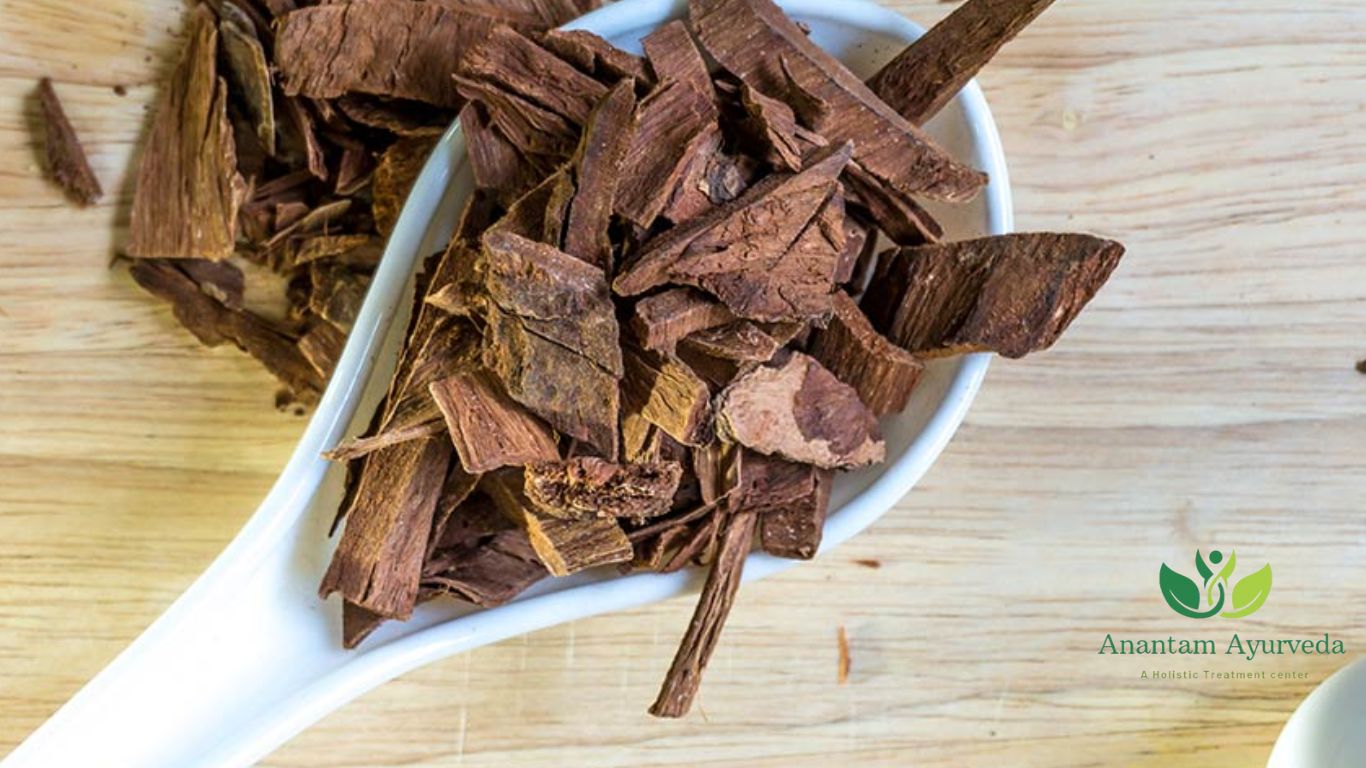
Chemical Composition of Vijaysar (Pterocarpus marsupium)
Pterocarpus marsupium, commonly known as Vijaysar, is rich in a diverse range of bioactive compounds that contribute to its therapeutic properties. These chemical constituents play a crucial role in its medicinal efficacy, particularly in managing metabolic conditions like diabetes and hypercholesterolemia.
Primary Chemical Constituents
-
Flavonoids and Polyphenols
-
Pterocarpol
-
Marsupol
-
Maesupin
-
Carpusin (Marsupsin)
-
(-) Epicatechin
-
Propterol
-
Pterosupin
-
Marsupinol
-
Pterostilbene
-
-
Terpenoids and Triterpenes
-
Lupeol
-
Beta-eudesmol
-
-
Phenolic Compounds
-
Pyrocatechol
-
Phenolic C
-
-
Tannins and Resins
-
Kino Tannic Acid (particularly concentrated in the heartwood)
-
Tannic Acid
-
Epicatechin (a powerful antioxidant)
-
Resins (containing a mix of tannins and polyphenols)
-
-
Isoliquiritigenin and Liquiritigenin
These bioflavonoids are the principal active compounds responsible for the anti-diabetic and lipid-lowering effects of Vijaysar.
Water-Soluble Extractives
-
Vijaysar contains not less than 5% water-soluble extractives, indicating the presence of bioactive compounds that dissolve easily in water, enhancing its bioavailability and efficacy.
Pharmacological Actions of Key Compounds
-
Anti-Diabetic and Hypoglycemic Effects
-
Isoliquiritigenin and Liquiritigenin reduce glucose absorption from the gastrointestinal tract, regulate blood sugar levels, and promote beta-cell regeneration in the pancreas.
-
Epicatechin improves insulin sensitivity and stimulates insulin secretion, aiding in the management of Type 2 Diabetes Mellitus.
-
-
Hypocholesteremic (Cholesterol-Lowering) Effects
-
Beta-eudesmol and Pterostilbene help reduce elevated blood cholesterol levels, supporting cardiovascular health.
-
The tannins in Kino resin also aid in lipid metabolism and prevent oxidative damage.
-
-
Antioxidant and Anti-Inflammatory Properties
-
Lupeol and Pterocarpol exhibit potent antioxidant activity, reducing oxidative stress and protecting against cellular damage.
-
Phenolic C and pyrocatechol further contribute to reducing inflammation and improving metabolic health.
-
-
Beta-Cell Regeneration
-
Liquiritigenin plays a key role in promoting the regeneration of pancreatic beta-cells, crucial for insulin production and glucose regulation.
-
Significance of Kino Tannic Acid
The Kino Tannic Acid found primarily in the heartwood of Pterocarpus marsupium is responsible for many of its therapeutic benefits. It aids in:
-
Stabilizing blood sugar levels by improving insulin function.
-
Exhibiting astringent and wound-healing properties.
-
Providing anti-diarrheal and anti-inflammatory effects.
Vijaysar’s comprehensive chemical composition underpins its extensive use in Ayurveda, particularly for managing metabolic disorders, promoting pancreatic health, and improving lipid profiles.
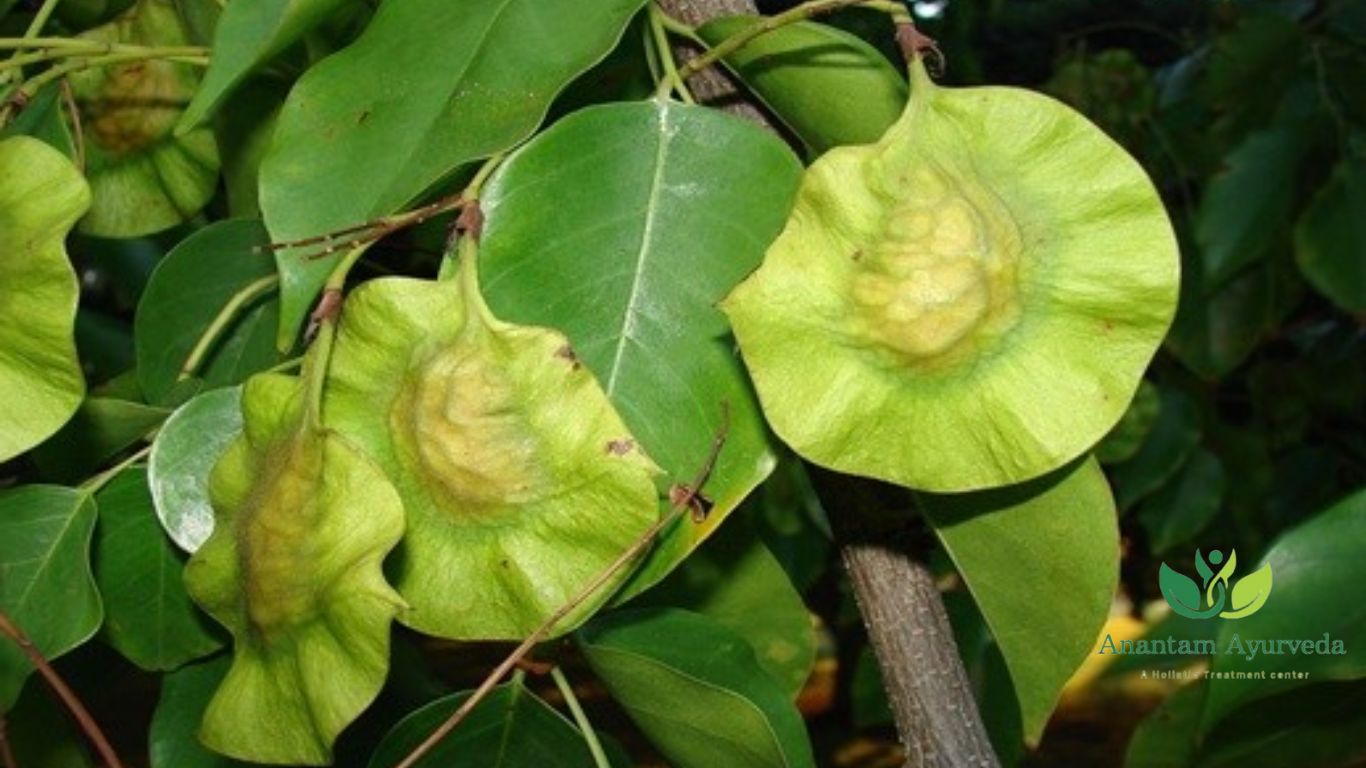
Properties, Parts Used, and Dosage of Vijaysar (Pterocarpus marsupium)
Vijaysar (Pterocarpus marsupium) is highly valued in Ayurveda due to its diverse medicinal properties and therapeutic benefits. It is primarily known for its efficacy in managing metabolic disorders, particularly diabetes, and its ability to balance the body’s doshas.
Medicinal Properties of Vijaysar
-
Guna (Qualities):
-
Laghu – Light to digest
-
Ruksha – Dry in nature
-
-
Rasa (Taste):
-
Kashaya – Astringent
-
Tikta – Bitter
-
-
Vipaka (Post-Digestive Effect):
-
Katu – Pungent taste after digestion
-
-
Veerya (Potency):
-
Sheeta – Cooling in nature
-
Effect on Tridosha
Vijaysar helps to balance two primary doshas:
-
Kapha Dosha – Reducing mucus, phlegm, and excess fluid retention
-
Pitta Dosha – Alleviating heat-related imbalances and promoting cooling
Parts Used
-
Heartwood – Primary medicinal part, used extensively for its anti-diabetic, astringent, and cooling properties.
-
Exudate (Resin) – Used for wound healing and anti-inflammatory effects.
-
Bark and Seeds – Occasionally used but with milder therapeutic benefits.
Dosage of Vijaysar
-
Decoction (Kashaya): 50-100 ml per day
-
Powder (Churna): 3-6 g per day
Classical Categorization of Vijaysar (Pterocarpus marsupium)
In Ayurvedic literature, Pterocarpus marsupium (Vijaysar) is classified under various herbal groupings by different ancient Ayurvedic texts. These classifications reflect the plant’s therapeutic properties and its use in managing specific health conditions.
-
Sushruta Samhita – Salaasaradi Gana
-
Listed under Salaasaradi Gana, which includes herbs known for their ability to manage wound healing, inflammation, and skin disorders.
-
-
Ashtanga Hridaya (Vagbhata) – Asanadi Gana
-
Categorized under Asanadi Gana, comprising astringent and cooling herbs that are effective for blood purification and managing diabetes (Prameha).
-
-
Kaiyadeva Nighantu – Oshadhi Varga
-
Placed under Oshadhi Varga, a category encompassing medicinal plants with broad-spectrum therapeutic properties.
-
-
Dhanvantari Nighantu – Amradi Varga
-
Included in Amradi Varga, a group of plants resembling mango trees in their structure and medicinal action.
-
-
Bhavaprakasha – Vatadi Varga
-
Classified under Vatadi Varga, which contains herbs that pacify Vata dosha and are used for treating joint disorders, digestive issues, and diabetes.
-
-
Raja Nighantu – Prabhadradi Varga
-
Mentioned in the Prabhadradi Varga section, highlighting its astringent and rejuvenating properties.
-
These classical groupings demonstrate Vijaysar’s multifaceted role in Ayurvedic therapeutics, particularly in managing metabolic disorders, wound healing, and Vata-related imbalances.
Traditional Uses of Vijaysar in Ayurveda
In Ayurvedic medicine, Vijaysar is classified under “Tikta Rasa” (bitter taste) and “Sheeta Virya” (cooling potency). Its primary therapeutic effects are believed to balance the Kapha and Pitta doshas. The following are the primary traditional uses of Vijaysar:
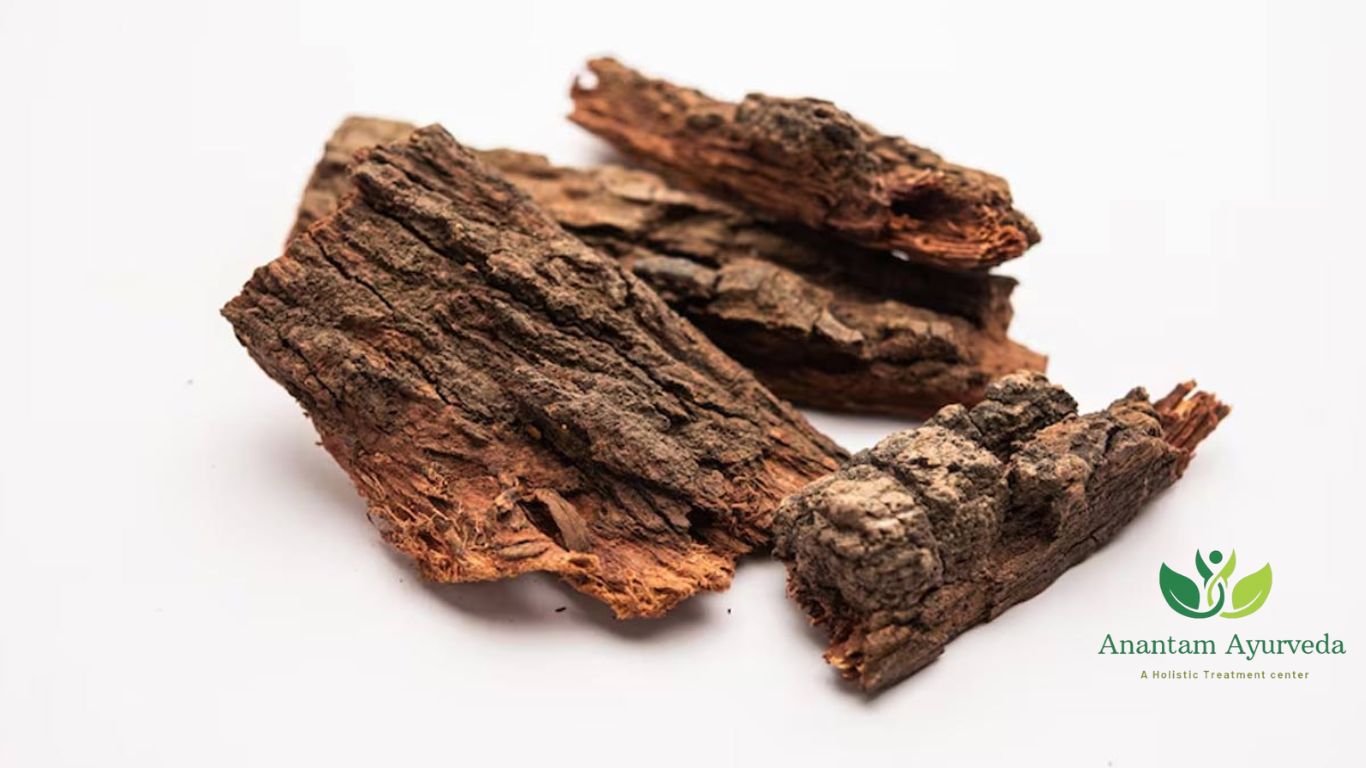
1. Diabetes Management
Vijaysar is famously known as a “natural remedy for diabetes”. Ayurvedic practitioners use it to manage Madhumeha (diabetes mellitus). Its antidiabetic properties are attributed to the presence of flavonoids, tannins, and phenolic compounds. These compounds help regulate blood sugar levels by enhancing insulin sensitivity and reducing glucose absorption in the intestines.
How to Use:
- Vijaysar Wood Tumblers: Soaking water in Vijaysar tumblers overnight and consuming it in the morning is a common practice to maintain healthy blood sugar levels.
- Powdered Form: Consuming Vijaysar bark powder with warm water aids in managing diabetes.
2. Weight Management
Vijaysar aids in weight loss by improving metabolism and regulating lipid levels. It helps reduce bad cholesterol (LDL) while enhancing good cholesterol (HDL). This property makes it valuable for people struggling with obesity.
How to Use:
- Consuming Vijaysar decoction on an empty stomach may help burn excess fat and boost metabolism.
3. Digestive Health
The bitter and astringent properties of Vijaysar promote healthy digestion and relieve common gastrointestinal issues such as indigestion, constipation, and diarrhea. It works by stimulating the secretion of digestive enzymes and reducing bloating.
How to Use:
- Drinking a Vijaysar infusion post-meal can aid in digestive comfort and bowel regularity.
4. Skin Health
Vijaysar’s anti-inflammatory and antibacterial properties make it an effective remedy for skin conditions like eczema, psoriasis, and acne. Its detoxifying action helps purify the blood, reducing skin irritation and inflammation.
How to Use:
- Topical Application: Apply Vijaysar paste directly to affected skin areas.
- Internal Use: Consuming Vijaysar water promotes internal cleansing and skin clarity.
5. Liver Protection
Vijaysar acts as a hepatoprotective agent, safeguarding the liver from damage caused by toxins, alcohol, and oxidative stress. It supports liver detoxification and enhances its overall function.
How to Use:
- Consuming Vijaysar bark extract can protect against fatty liver and other liver-related disorders.
Home Remedies Using Vijaysar (Pterocarpus marsupium)
Vijaysar offers simple yet effective home remedies for various health conditions. With its anti-inflammatory, anti-diabetic, and rejuvenative properties, it plays a significant role in Ayurvedic practice. Below are some practical applications of Vijaysar for common health issues.
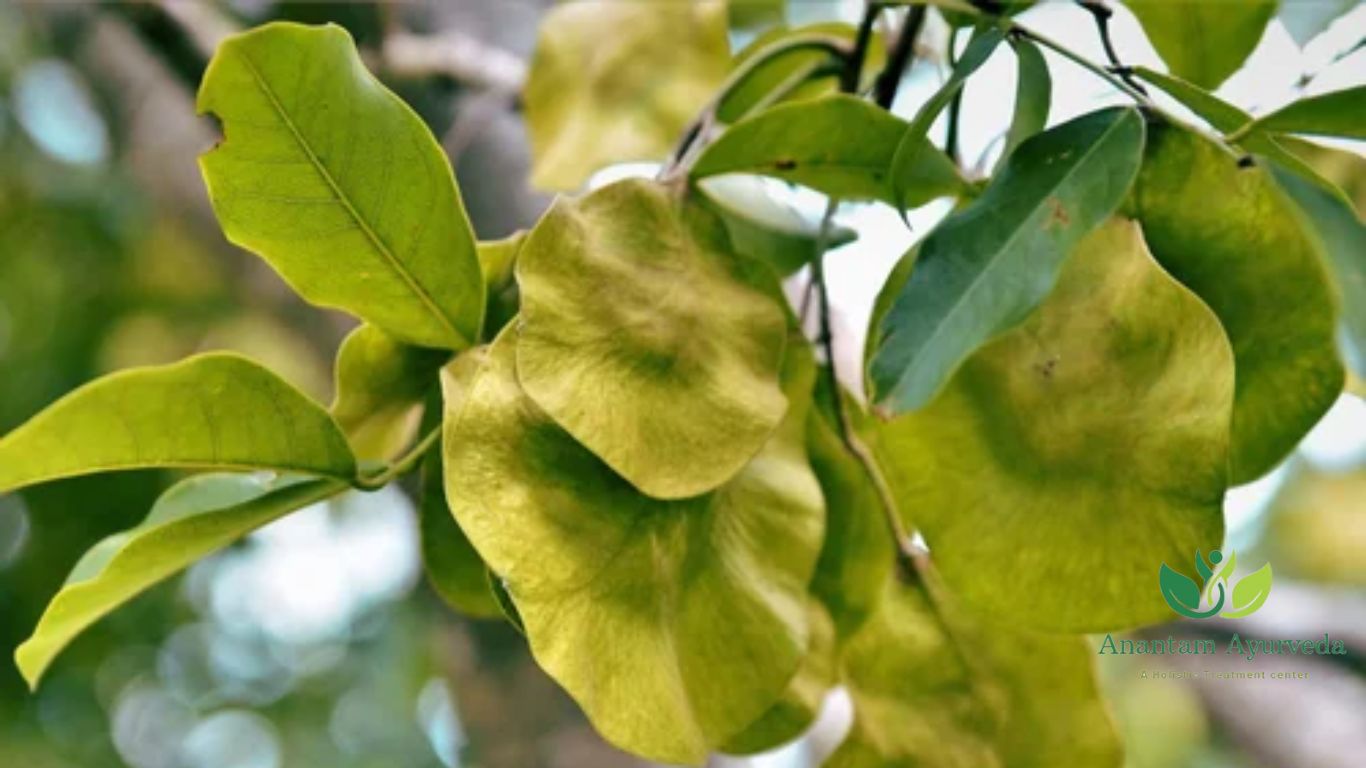
1. Leaf Paste for Inflammatory Conditions
Ingredients:
-
Fresh Vijaysar leaves (as required)
Method of Preparation:
-
Collect fresh Vijaysar leaves and grind them into a fine paste.
-
Slightly warm the paste for better penetration.
-
Apply the warm paste directly over the swelling or inflamed area.
Usage:
-
Apply twice daily for 3-4 days to reduce swelling and inflammation.
-
This remedy is also beneficial for petechial hemorrhages (small red or purple spots due to bleeding under the skin).
2. Heartwood Decoction for Type II Diabetes Mellitus
Ingredients:
-
Vijaysar heartwood powder – 1 tablespoon
-
Water – 2 cups
Method of Preparation:
-
Take 1 tablespoon of coarse heartwood powder.
-
Add it to 2 cups of water.
-
Boil the mixture until it is reduced to 1 cup.
-
Strain the liquid to obtain the decoction (kashaya).
Usage:
-
Dosage: 50-100 ml of the decoction once or twice daily.
-
Effective for managing mild to moderate Type II Diabetes Mellitus by reducing blood sugar levels.
3. Hot Infusion with Honey for Obesity
Ingredients:
-
Vijaysar bark or heartwood – 1 tablespoon (coarse powder)
-
Hot water – 1 cup
-
Honey – 1 teaspoon (optional)
Method of Preparation:
-
Add 1 tablespoon of bark or heartwood powder to 1 cup of hot water.
-
Let it steep for 15-20 minutes.
-
Strain the infusion and add honey if desired.
Usage:
-
Dosage: Drink this infusion throughout the day whenever thirsty.
-
Helps in weight reduction and prevents fatigue, especially in overweight individuals.
4. Bark Decoction for Neuritis and Numbness of Limbs
Ingredients:
-
Vijaysar bark – 1 tablespoon (coarse powder)
-
Water – 2 cups
Method of Preparation:
-
Boil 1 tablespoon of bark powder in 2 cups of water.
-
Reduce the mixture to 1 cup and strain.
Usage:
-
Dosage: Take 50-100 ml of this decoction once or twice daily.
-
Beneficial in treating peripheral neuritis (inflammation of nerves) and numbness in the limbs.
5. Vijaysar Wood Glass Benefits for Blood Sugar Control
Method of Preparation:
-
Use a cup made from Vijaysar wood.
-
Pour drinking water into the cup and let it sit overnight.
-
In the morning, drink the infused water on an empty stomach.
Usage:
-
Regular consumption helps regulate blood sugar levels and supports metabolic health.
Synergistic Use of Vijaysar with Other Herbs
Vijaysar’s therapeutic benefits can be enhanced when combined with other Ayurvedic herbs:
-
Kathaka (Strychnos potatorum): Improves urinary health and detoxification.
-
Khadira (Acacia catechu): Enhances blood purification and skin health.
-
Turmeric (Curcuma longa): Boosts anti-inflammatory and antioxidant effects.
Integrating these synergistic combinations in clinical practice can maximize the therapeutic benefits of Vijaysar.
Vijaysar is not only valued for its anti-diabetic properties but also serves as a rejuvenative and hair tonic. Although modern research focuses on its primary actions, Ayurveda emphasizes a holistic understanding of its broader therapeutic potential.
Scientific Evidence Supporting Vijaysar’s Efficacy
Modern research has validated several traditional uses of Vijaysar:
- Diabetes Control: Studies suggest that Pterostilbene in Vijaysar lowers blood glucose levels and improves insulin sensitivity.
- Cholesterol Reduction: Clinical trials show a significant decrease in LDL cholesterol and triglycerides with regular Vijaysar consumption.
- Liver Health: Research indicates that Vijaysar protects liver tissues from oxidative damage and enhances detoxification pathways.
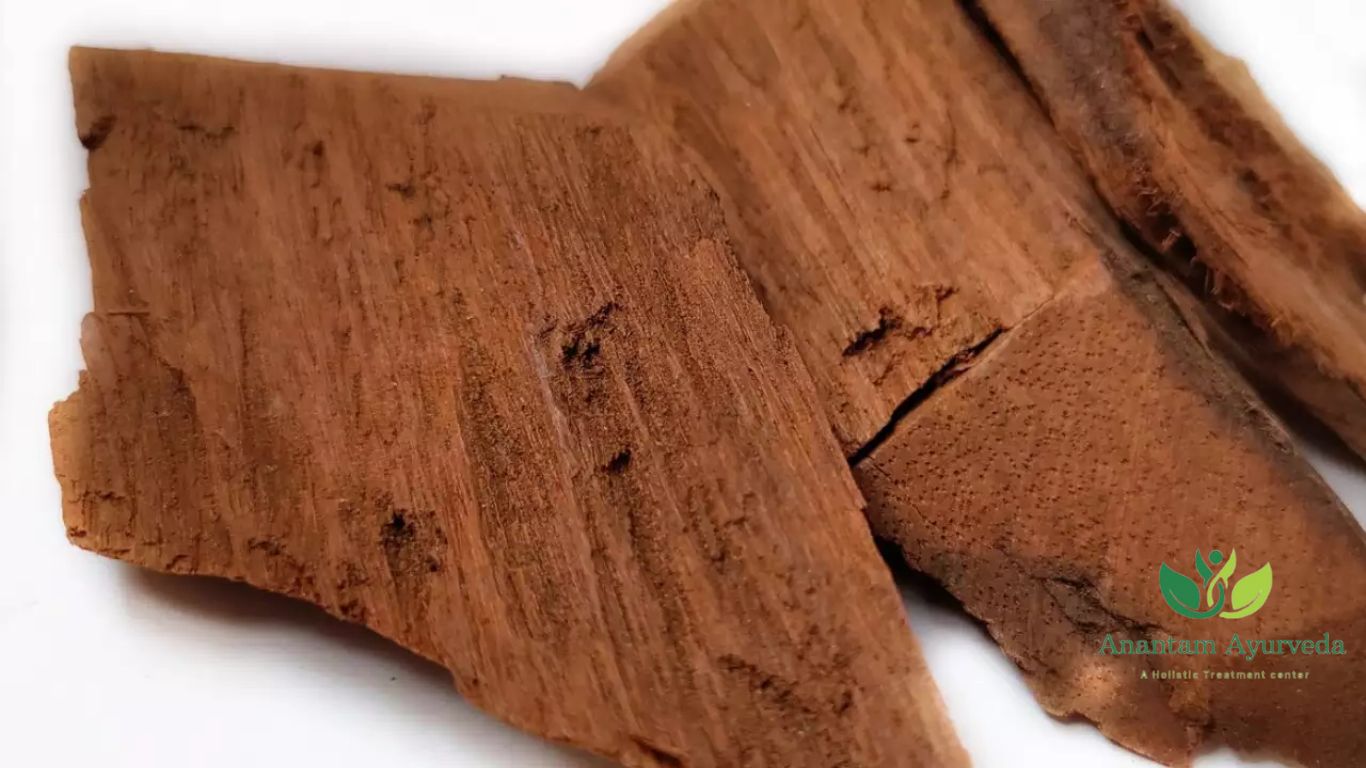
Methods of Using Vijaysar in Daily Life
- Vijaysar Tumbler Method: Soak a Vijaysar tumbler in water overnight and drink the infused water the next morning.
- Herbal Capsules/Tablets: Convenient for those seeking standard doses of Vijaysar extract.
- Decoction Preparation: Boil Vijaysar bark in water and consume the strained liquid.
Precautions and Side Effects
- Pregnancy & Lactation: Avoid usage without medical supervision.
- Allergic Reactions: Discontinue if symptoms like rashes or breathing difficulties arise.
- Medication Interactions: Consult a physician if you are on antidiabetic or antihypertensive drugs.
Conclusion: Embracing the Healing Power of Vijaysar
Pterocarpus marsupium remains a cornerstone of Ayurvedic medicine, offering holistic benefits from blood sugar regulation to liver support. Its time-tested efficacy and increasing scientific validation highlight its importance in natural wellness. Incorporating it into daily routines can provide a safe and effective path toward better health and vitality.
Frequently Asked Questions (FAQs)
1. Can Vijaysar Aid in Weight Loss?
Yes, it is known for its fat-reducing properties. It boosts metabolism, helps burn excess fat, and reduces cholesterol and triglycerides, supporting healthy weight management.
2. Is It Safe to Drink Water from a Vijaysar Wood Tumbler?
Absolutely! Drinking water from a Vijaysar wood tumbler is safe and may assist in regulating blood sugar due to its natural antioxidant and anti-diabetic properties.
Usage Tip:
-
Fill the tumbler with water and let it sit overnight.
-
Drink the infused water the next morning.
-
The water may turn a reddish-brown color but remains odorless and tasteless.
3. Can Vijaysar Help Control Diarrhea?
Yes, it has anti-diarrheal effects. Its natural flavonoids reduce the frequency and severity of diarrhea while helping to restore digestive balance.
4. Are There Any Side Effects of Using Vijaysar?
When consumed in moderation, Vijaysar typically has no significant side effects. However, it is best to consult a healthcare professional before prolonged use.
5. How Does Vijaysar Help Manage Cholesterol Levels?
It helps lower bad cholesterol (LDL) and improves good cholesterol (HDL) balance. Its hot potency (Ushna) supports digestion and reduces toxins (Ama) responsible for high cholesterol.
6. Can Vijaysar Promote Hair Health?
Yes, it may support scalp health and hair growth. Its Pitta-Kapha balancing properties help manage dandruff, itching, and hair fall, although more scientific research is needed.
7. Can Vijaysar Powder Help with Diabetes?
Yes, powder may assist in managing blood sugar levels by enhancing insulin secretion and protecting pancreatic cells from oxidative stress.
8. Should I Stop Taking My Medications While Using the Vijaysar Wood Tumbler?
No, it should be used as a supplement rather than a replacement for prescribed medication. Continue your medications while monitoring your blood sugar levels regularly.
9. Can Vijaysar Help Eliminate Intestinal Worms?
Yes, it has anthelmintic properties that assist in expelling intestinal worms without harming the body’s natural processes.
10. Can Drinking Vijaysar Water Cure Diabetes?
While it does not cure diabetes, Vijaysar may manage blood sugar levels. Compounds like epicatechin in its bark protect β-cells and improve insulin function.
11. Can Vijaysar Help in Managing Elephantiasis?
Although scientific data is limited, Vijaysar’s anti-inflammatory properties may reduce swelling and discomfort associated with elephantiasis (Shleepad).
12. How Does Vijaysar Benefit Liver Health?
It supports liver health due to its antioxidant properties. It protects liver cells from free radical damage and enhances hepatic function.
13. Can Vijaysar Help Treat Anemia?
In Ayurveda, Vijaysar is used to treat Pitta-related anemic conditions. It may help manage anemia arising from poor dietary absorption or diabetes-related weakness.
14. Is Vijaysar Useful for Dental Health?
Yes, it can strengthen gums and alleviate toothaches. Its astringent properties reduce inflammation and promote oral hygiene.
15. What Is the Shelf Life of Vijaysar Wood?
The shelf life of Vijaysar wood is approximately 3 years if stored properly in a cool, dry place.
You can follow us on twitter, facebook, & Google News

1 Comment